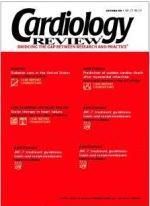Publication
Article
Cardiology Review® Online
Gene that causes insulin resistance in Mexican Americans is identified
The lipoprotein lipase (LPL) gene controls the delivery of free fatty acids to muscle and tissue and has been linked to insulin resistance in Mexican Americans. The finding may enable the development of therapies that target LPL to prevent insulin resistance, say the authors of the study (Diabetes. 2004;53[1]:214-220).
One in four adult Americans has insulin resistance, and the prevalence is even higher among Mexican Americans. Insulin resistance is estimated to affect more than 80% of the 16 million Americans with type 2 diabetes as well as the additional millions at risk for heart disease. Because of the association of insulin resistance with diabetes and cardiovascular disease, the involvement of common gene abnormalities is being investigated.
In the study, researchers at Cedars-Sinai Medical Center, in collaboration with investigators at the University of California, Los Angeles, have found that LPL is linked to insulin resistance in Mexican Americans. “This is the first study to de-
finitively show that LPL is a gene for common insulin resistance,” said Jerome I. Rotter, MD, director of the division of medical genetics and director of the Common Disease Genetics Program, Cedars-Sinai Medical Center.
To determine directly whether the LPL is an insulin resistance gene, the investigators examined a large, high-risk population of Mexican Americans using the hyperinsu-linemic-euglycemic clamp study—widely regarded as the most direct physiologic measurement of insulin sensitivity—coupled with an an-alysis of the patients’ DNA for a group of six of the most common LPL gene markers (haplotypes) in this population. In the study, 291 adult offspring of 74 families with documented coronary heart disease were tested for six specific LPL haplotypes and underwent the hyperinsulinemic-euglycemic clamp test, receiving an infusion of insulin in one arm over a 2-hour period. The patients also had blood samples drawn from the other arm to determine glucose concentrations in the blood. The glucose infusion rate during the hyperinsulinemic-eulycemic clamp study reflects glucose uptake by all tissue of the body and is therefore a direct physiologic measurement of tissue insulin sensitivity.
To determine whether insulin resistance, as measured by the glucose clamp test, was linked to certain haplotypes on the LPL gene, the level of insulin resistance was then examined for each of the eight LPL haplotypes observed in this pop-ulation. One particular haplotype, called haplotype 4, was associated with the lowest insulin sensitivity (greatest insulin resistance) whereas haplotype 1 was linked with low levels of insulin resistance.
“Our study showed that two
separate haplotypes of LPL were linked to low or high levels of insulin resistance, confirming that the LPL gene plays a role in determining insulin resistance in this population of Mexican Americans,” said Dr. Rotter. Haplotypes are more likely to identify disease as-sociations than single polymorphisms because they reflect global gene structure and encompass the majority of common variations in a gene. Among the 291 patients typed for LPL haplotype markers, 40 were found to carry haplotype 4 whereas 239 carried haplotype 1. “This finding is significant because it provides direct evidence that LPL is an insulin resistance gene by showing that LPL haplotypes are linked with a direct quantitative measurement of insulin resistance in Mexican Americans,” said Dr. Rotter.
LPL may affect insulin sensitivity by influencing levels of intramyocellular lipid, which correlate with muscle insulin resistance, the authors speculate. It may also influence insulin resistance by affecting free fatty acid delivery to visceral adipose tissue and have a role in atherosclerosis development via its action on plasma triglycerides and delivery of free fatty acid and lipoprotein remnants to vessel wall macrophages, thereby influencing foam cell formation, which is a precursor to atherosclerotic plaque.
